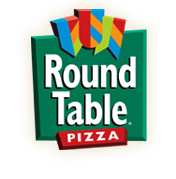 Our fundraising activities are aimed at raising money to offset the medical expenses my friend is incurring as a result of her breast cancer diagnosis, including three surgeries in a matter of weeks (because the cancer had spread to one lymph node they removed all the others on that side but thankfully none of those were cancerous), followed by chemo (and all the medications to fight those side effects) and radiation.
Our fundraising activities are aimed at raising money to offset the medical expenses my friend is incurring as a result of her breast cancer diagnosis, including three surgeries in a matter of weeks (because the cancer had spread to one lymph node they removed all the others on that side but thankfully none of those were cancerous), followed by chemo (and all the medications to fight those side effects) and radiation. The fundraising activities logically divide into several phases, so I will post about this in several parts. You can read about my fundraiser specifically at helptheharrisfamily.blogspot.com. And if you live in the Paradise/Chico, CA area, our event is this next Monday, March 5th from 5 to 9 PM at the Paradise Round Table Pizza - we hope to see you there!!!
Part 1 - Getting Started
Form a "Committee"
Include those core people willing to commit and help with every facet of the fundraising. There will (hopefully) be other people who volunteer to help with various activities along the way, but these are the people that will be "in charge" of making decisions.
You should have this meeting early in the process so everyone is on the same page. It is hard not to have your head swirl with ideas once you decide to do a fundraiser and everyone can go off in different directions pretty quickly. That first meeting allows you to focus your energy on realistic endeavors that everyone agrees to pursue.
Have a Goal in Mind
Have a clear financial goal in mind, based on the beneficiary's expected medical expenses. I'm certainly no tax expert, but don't forget to aim about 25% higher to allow the beneficiary plenty to pay taxes on all the funds raised (since they will be taxed as income). In our case, this is a lofty goal because they have many expenses, but all the more reason to try and help! Anything we can do will ease their burden and that is the whole point!!
Organizing the Funds you Raise
It took several conversations with various folks (my banker, my CPA, and finally the head of a local community foundation) before I understood that becoming a non-profit is not the way to go about a fundraiser for an individual's medical expenses. In fact, a non-profit by definition can not benefit a named individual. Which means that none of the donations will be tax deductible (this hasn't seemed to affect our collections - our community has been amazing!). And incidentally, setting up a non-profit is a long and expensive process.
The banking end of things ended up being pretty simple. My friend (the beneficiary) had to go to her bank and fill out a form to get a Tax ID from the IRS, and then set up a bank account specifically for the fundraiser, a "Medical Expense Fund" in her name. Then she set up a separate PayPal account and linked it to that bank account.
Consider how you will invest in your fundraiser. We kept things to a BARE minimum in terms of up-front costs, which somewhat dictated what events we planned and how we got the word out. We also didn't want to take any money away from our friend to pay for the fundraiser from the raised funds.
Involve the beneficiary
While we would have loved to have pulled off all the fundraising and handed my friend a check to cover all of her expenses without her knowledge or energy, that just isn't possible. There are many parts of the fundraiser that will need her input, there's just no way around that. She had to handle the Tax ID, opening the bank account, and linking it to PayPal. And because she's a very private person, we've run everything we're doing for advertising by her (especially if it has her picture on it!).
Brand Your Fundraiser
You should put together a background story and take some photos early in the process. The advice I got was that your "main" photo should be of the person and his or her family, preferably smiling and happy. So we had a little photo shoot one day when she was feeling up for it and I got some great photos.
Once I had these two pieces, I set-up a "Cause" Facebook page (so it would have a "like" button) and a website (a Blogger blog since I'm familiar with how to do that). I created the pink ribbon and Gerber daisy logo pictured in this post in order to unify all of our printed and web materials.
Decide WHAT you'll do
We have decided to have one main local event with many different fundraising activities. Ours was greatly simplified by a program that our local Round Table Pizza has (which may be franchise-wide) where you can have 4 hours set aside in an evening (must be a Monday, Tuesday, or Wednesday) and they will "host" your event and donate a generous portion of all non-alcohol sales to the cause (including delivery in our case!). That took care of a venue and food without any up-front costs for us, whew! Since we began contacting other businesses in the area, we've learned that other places offer a similar program.
We are also allowed to have other activities at this event, so we are going with a raffle, silent auction, and bake sale. More about these in future posts.
Have a Timeline
We set the date of our event based on when my friend was most likely to be having a good day based on her chemo schedule. This, plus the fact that the bills are already coming in and we wanted to help as quickly as possible, meant we needed to plan the event within about 8 weeks. This is SO LITTLE TIME! But it is totally possible!!
We set little deadlines for ourselves that broke the planning into logical phases.
Collecting: We needed to know what items would be donated (mostly) in order to start advertising for the raffle and silent auction, so we started by contacting businesses and asking for donations. This will be the focus of the next post in this series.
Advertising: Then once we had a general idea of the donations we had, we moved into advertising mode: posting updates on Facebook and our website, posting flyers, passing out flyers, selling raffle tickets, getting our event mentioned in newspapers and on the radio, etc. In order to concentrate our efforts, we thought we'd have advertising go for about 2 weeks prior to the event. In reality it may be about half that (other than posted flyers and Facebook/web stuff) because it takes some time to really arrange for the advertising, so that was one (of many) lessons learned. Because we wanted to expose those businesses donating to our cause as much as possible, I think we held out a little too long waiting to gather the donation commitments before we moved forward planning the advertising, but it is really hard to cut that off. Of course we are still collecting (awesome!) donations, but in reality it is reasonable to have a little less exposure for those that weren't able to commit right away. We will still do everything we can to thank all the businesses that participate (more on this later)!
Ask for Help
Once we had a plan for the event and fundraising activities we wanted to do, we set out to ask for help from the community. I will post about this next time.
Thanks so much for reading! Have you ever planned a fundraiser for a friend? What lessons did you learn along the way?
This post has been linked up to:
Home Decor & Organizing Party @ Organize & Decorate Everything
One Project at a Time @ A Bowl Full of Lemons
Organizing & DIY Link Party @ Organizing with Sandy



